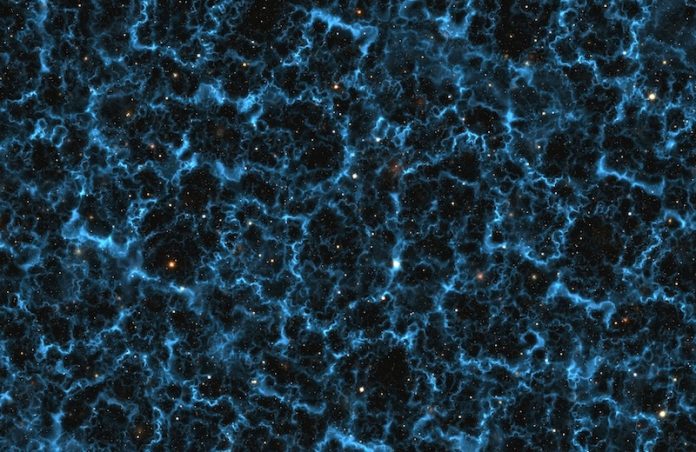
An international team of researchers has found that dark matter dominates the halos of two supermassive black holes in galaxies nearly 13 billion light-years away. Their study, published in The Astrophysical Journal, provides a new look at the role of dark matter in the early universe and how galaxies have evolved over time.
Dark Matter: The Hidden Force Shaping Galaxies
The first major evidence of dark matter’s influence on galaxies came from Vera Rubin in the 1970s. She observed that the outer edges of galaxies were rotating much faster than expected, forming what is now known as a flat rotation curve. According to Newton’s laws, stars and gas far from a galaxy’s center should orbit more slowly than those closer in. However, Rubin’s findings suggested that an invisible mass—now called dark matter—was surrounding galaxies in a halo, providing extra gravitational pull to keep outer regions moving at high speeds.
Despite its importance, how dark matter assembled in the early universe remains a mystery, as it has never been directly observed at such great distances—until now.
Tracking Dark Matter in Ancient Galaxies
Led by Qinyue Fei, a researcher at The University of Tokyo Kavli Institute for the Physics and Mathematics of the Universe (Kavli IPMU, WPI) and a graduate student at Peking University, the team studied the dark matter content of two supermassive black holes from the early universe. The research included contributions from Professor John Silverman (Kavli IPMU), Dr. Seiji Fujimoto (University of Texas Austin), and Associate Professor Ran Wang (Peking University).
Using data from the Atacama Large Millimeter/submillimeter Array (ALMA), the researchers analyzed the motion of ionized carbon gas within two distant quasar host galaxies, which existed when the universe was just 1.5 billion years old (redshift 6). By studying the rotation curves of these galaxies, they determined that dark matter made up about 60% of their total mass.
“We’re using the same technique Vera Rubin pioneered, but now applying it to the early universe,” said Silverman.
A Surprising Discovery
Previous studies of galaxies from redshift ~2–3 (when the universe was about 2–3 billion years old) showed that their rotation curves dropped off at the edges. This suggested a lower fraction of dark matter, possibly due to interactions such as mergers or high gas content.
However, Fei and Silverman’s team found a different pattern. Their data revealed a flat rotation curve—similar to massive disk galaxies found much closer to Earth. This means that, even at these extreme distances, dark matter was already playing a significant role in shaping galaxies.
Unlocking the Connection Between Dark Matter and Supermassive Black Holes
This study provides critical insights into the relationship between dark matter and supermassive black holes in the early universe. Since dark matter drives galaxy formation, understanding its distribution helps astronomers determine how galaxies grew and evolved into the structures we see today.
“The discovery of a flat rotation curve in these ancient galaxies suggests that dark matter has been influencing galaxy dynamics since the universe’s early days,” the researchers noted.
Their findings offer a new piece of the puzzle in understanding the role of dark matter in galaxy formation and set the stage for future observations with advanced telescopes like the James Webb Space Telescope (JWST).
The research findings can be found in The Astrophysical Journal.
Copyright © 2025 Knowridge Science Report. All rights reserved.



